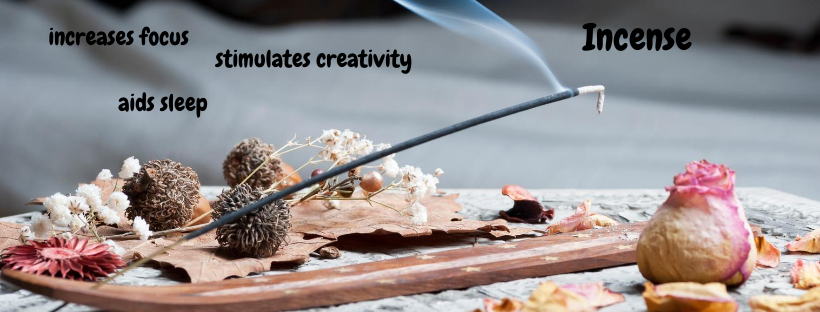Incense

Incense comes from the Latin word “incendere,” which means to burn.
Incense was made from aromatic materials that releases fragrant smoke when burned. The most commonly used incense were Frankincense, Myrrh, Sandalwood, Sage, and Rose.
The burning of Incense started many thousands of years ago and were used in religious ceremonies and for therapeutic reasons throughout the world.
What are Incense?
A variety of plant-based materials are used when making incense and depends largely on the ingredients available to the makers. For example, sage and cedar were popular in North America as the plants and trees were in abundance there.
As people began to expand and explore the known world, incense materials became a hot ticket item along the Silk Road and even had it’s own route called the Incense Route.
Incense came in sticks, cones, coils, and powders. Resin balls were even found in many prehistoric Egyptian tombs.
Local knowledge and tools were extremely influential on the incense style. Incense makers also found themselves being influenced by foreign visitors, clergy, and physicians.
How do Incense work?
The binding materials inside the incense vary and can include resins, barks, roots, or flowers. These dried materials are combustible and ignite when lit. The lit incense produces a scented smoke depending on which essential oil is is combined with.
Once lit, incense burning time varies by the incense type. A incense cone will burn roughly 20-30 minutes, while an incense stick could burn between 30 and 90 minutes.
The incense will continue to burn until all the binding materials are consumed. It does produce an ash so it is important to place the incense on something non-flammable like plate or incense stand.
Why use Incense for trauma symptoms?
Scents stimulate certain responses in our brains. Incense can be a great addition to meditations, bodywork sessions, or nighttime routines to help alleviate emotional and mental symptoms experienced by survivors of child abuse and childhood trauma.
To Increase Your Ability to Focus
Burn Lemon, Lavender, Jasmine, Rosemary, Cinnamon, or Peppermint incense. These scents have a calming effect and helps clear your mind, especially when you’re feeling anxious, irritable, or tired.
Eases Insomnia and Aids in Sleep
Vanilla, Valerian Extract, Sandalwood, Juniper, Geranium, or Ylang Ylang incense are helpful in relieving insomnia. Burn a small incense while falling asleep to enhance your slumber (see safety tips below).
Stimulates Creativity and Improves Mental Performance
Use Lemongrass, Orange, Lime, Clove or Ylang-Ylang incense to open your mind and boost your imagination so you can process information easier.
How to use Incense
Place the incense in or on a fire-resistant holder. Using a lighter or match, hold the flame on the tip of the incense until you see a flame. Once the incense begins to glow, gently blow out the flame. Smoke will come out of the lit end.
When burning incense, make sure you do it safely and minimize any fire hazards. Here are some tips:
* Choose an incense that contains all natural ingredients.
* Only burn one incense at a time.
* Never leave a lit incense unattended.
* Have a window slightly open while burning.
IMPORTANT NOTES
If you suffer from any type of respiratory condition, then incense is not a good choice for you. An alternative would be to use the essential oil in a diffuser. See more on essential oils.
Recent Resources
Site Disclaimer
Peace From the Past is designed to support, not replace, medical or psychiatric treatment. Before using the site, please read our Privacy Policy and Terms of Use.
Site Info
© 2025 Peace From the Past - All Rights Reserved.